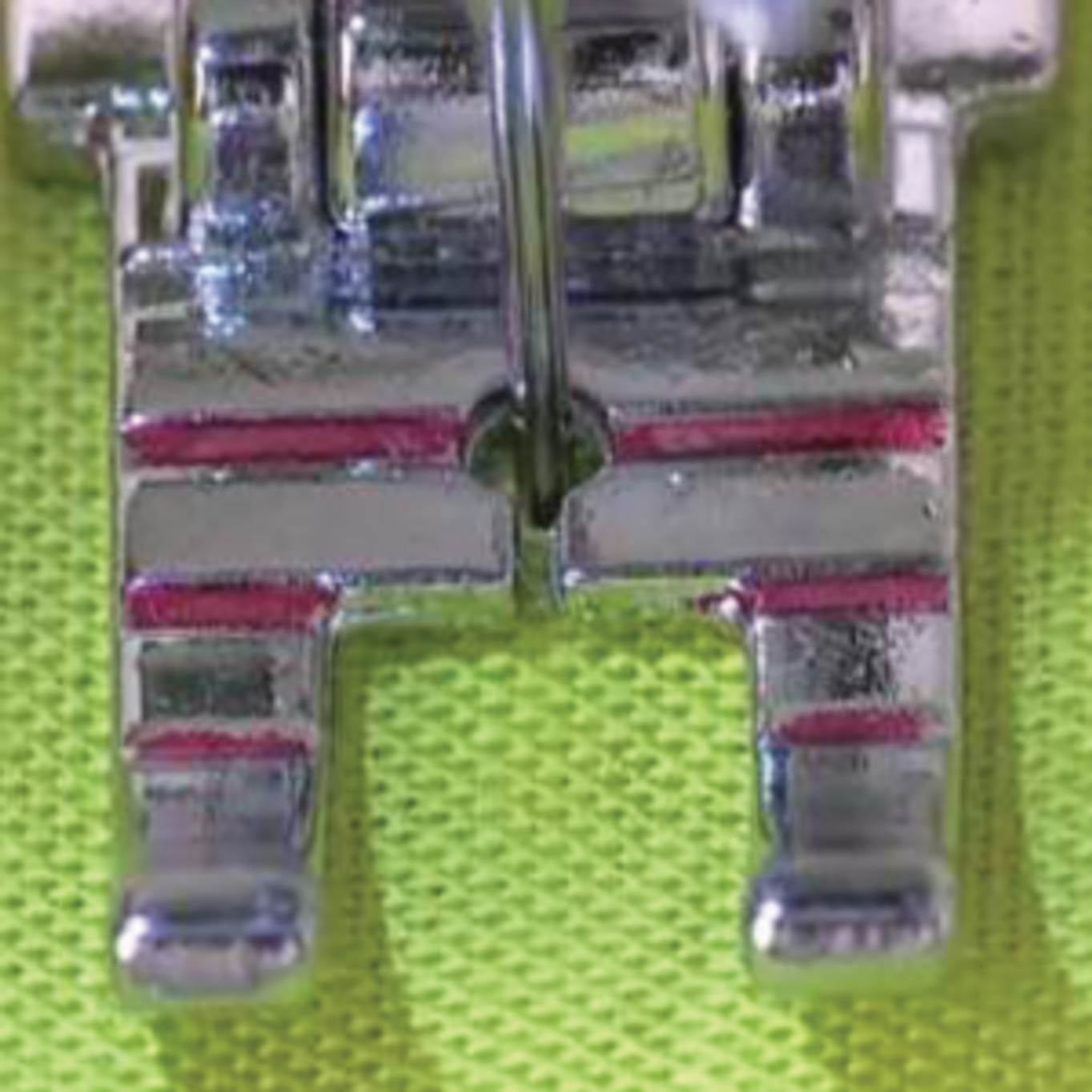
 The Quarter Inch Foot is most often used for quilt piecing. The foot will help you sew and create 1/4" seam allowances.
The Quarter Inch Foot is most often used for quilt piecing. The foot will help you sew and create 1/4" seam allowances.
1/4" Seam Allowances are also used when sewing many small projects such as crafts, doll clothes and more.
This foot has various markings on the surface to aid with pivoting at the corners.
The Quarter Inch Foot is used for straight stitch sewing only and is perfect for 1/4" Seams.
Accurate 1/4" Seam Allowances are achieved with the Quarter Inch Foot because the distance from center needle opening to the right hand edge of the needle, is a 1/4".
When Using a Quarter Inch Foot, first check that your  Singer Sewing Machine is set to straight stitch, center the needle position. Turn the handwheel toward you slowly and check to see that the needle clears the small opening in the foot. If it does not clear the opening in the foot, use the stitch width control to move the needle until it lines up with the whole of the foot without hitting the foot.
Singer Sewing Machine is set to straight stitch, center the needle position. Turn the handwheel toward you slowly and check to see that the needle clears the small opening in the foot. If it does not clear the opening in the foot, use the stitch width control to move the needle until it lines up with the whole of the foot without hitting the foot.
Place your fabric under the presser foot and align the raw edge of the fabric with the right hand side of the presser foot for an accurate 1/4" seamline. As you begin sewing, hold the thread tails at the back of the foot to keep them secure and prevent thread tangling.
Pivoting
The Quarter Inch Foot has horizontal markings for multi- purpose uses in sewing. The horizontal marking closest to the front of the Quarter Inch Foot is a 1/4" guide useful when pivoting at a seamline corner with a 1/4" seam allowance.
purpose uses in sewing. The horizontal marking closest to the front of the Quarter Inch Foot is a 1/4" guide useful when pivoting at a seamline corner with a 1/4" seam allowance.
To pivot using the guideline at the front, sew your seam up to the corner, but stopping when the edge of the fabric aligns with the 1/4" horizontal guideline. Then, place the needle down into the fabric.
With the needle down in the fabric, raise the presser foot, turn the fabric to sew the remainder of the seam, aligning the raw edge of the fabric with the right-hand edge of the presser foot. Lower the presser foot then continue sewing the 1/4" seam.
The remaining two horizontal markings can also be used  for pivoting. The center horizontal mark is used for a 3/8" seam and the horizontal mark closest to the needle opening is used for a 1/2" seam.
for pivoting. The center horizontal mark is used for a 3/8" seam and the horizontal mark closest to the needle opening is used for a 1/2" seam.
